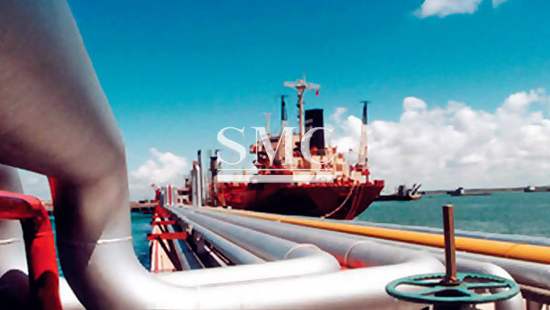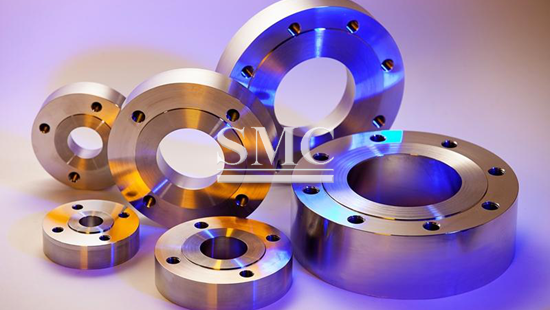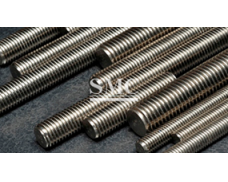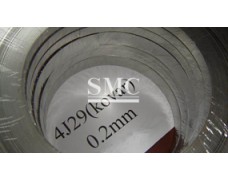
- Unternehmensübersicht Das Herz von Shanghai Metal Vision und Philosophie Partnerschaft Zertifizierungen Unternehmenskultur
- Unser Service Projekt-Design Wartung und Service Herstellung Transformation und Aufrüstung Lagerung und Logistik Verarbeitung und Handel
- Management Unsere Geschichte Globale Verantwortung
- Beschaffungszentrum Praktikum
- Metall Aluminiumprodukte Kupferprodukte Metallisch beschichtete Produkte Edelstahlprodukte Stahlprodukte Sonderlegierung
- Konstruktion Stahlgitter Lagerregal Stahlstruktur Stahlbrücke Gerüstbau Baumaterial Chemische Rohstoffe One Stop Solutions for Projects
- Containers ISO Standard Container Gerätecontainer Lagerbehälter Container Haus Reefer / Isolierbehälter Offshore Container
- Maschinen Formmaschine Andere Maschinen Schneidemaschine Verarbeitungsmaschine Biegemaschine Ziegelmaschine Motor
- Mechanische Produkte Fahrzeugindustrie Verschiedenes Festmacher Schiffsausrüstung Druckbehälter
- Elektrisches System Elektrisches Kabel Automatisierung Machtverteilung Solarenergie System Elektrisches Schutzsystem Transformator Fließband Blitzsystem
- Medizinisches Zubehör Fütterungsprodukte Atemwegsprodukte Pflegeprodukte Injektionsprodukte
- Baumaschinen
- EPC-Projekt
- Erdölleitung
- Wasserleitung
- Gas Leitung
- Boots- und Liegezubehör
- Metall zur Dekoration
- Transformator-Komponenten
- Wärmetauscherrohr
- Klimaanlage Ersatzteile und Zubehör
- Kessel
- Küchen- und Badezimmergerät
- Metall für Haushaltsgeräte
- Solarstromgerät
- Aufzug
- Dach und Decke
- Kabel
- Tank
- Verpackung
- Maschinen und Anlagen Ersatzteile und Zubehör
- Formenwerkzeug
- Autoteile
- Gleis- und Kranbahn
- Hardware-Anpassung
- Schleifmittel
- Straßenbaumaschinen
- Elektronische Bauteile
- Bau- und Ausbaumaterialien
- Türen und Fenster
- Kühlschränke
- Pressemitteilung Nachrichten aus der Metallindustrie Nachrichten von Maschinen und Anlagen Nachrichten von Bau und Gebäude Nachrichten von mechanischen Produkten Nachrichten von Containern Nachrichten von Elektrik System Nachrichten von medizinischem Zubehör
- Medienbibliothek Videos Bilder Folgen Sie den sozialen Medien in Shanghai
Hastelloy B-3
Dichte: 9,22 g / cm3
Schmelzbereich: 1370-1418 ℃
Density: 9.22g/cm3
Melting Range: 1370-1418℃
Physikalische Eigenschaften:
Physical properties:

Produktbeschreibung:
Gleichwertige Bezeichnungen
UNS N10675
DIN W. Nr. 2.4600
Products description:
Equivalent designationsUNS N10675
DIN W. Nr. 2.4600

Chemische Zusammensetzung:
Chemical Composition:

Eigenschaften:
Hastelloy B-3 hat eine hervorragende Beständigkeit gegenüber Salzsäure bei allen Konzentrationen und Temperaturen. Es ist beständig gegen Schwefelsäure, Phosphorsäure, Ameisensäure, Essigsäure und andere nichtoxidierende Medien. Es hat eine ausgezeichnete Beständigkeit gegen Lochfraßkorrosion, Spannungsrißkorrosion und Angriff der Messerlinie und der Wärmeeinflußzone. Hastelloy B-3 hat eine höhere thermische Stabilität als Hastelloy B-2.
Außergewöhnliche Beständigkeit gegen HCl und H2SO4 und verbesserte strukturelle Stabilität
HASTELLOY® B-3®-Legierung (UNS N10675) weist eine extrem hohe Beständigkeit gegen reine Salz-, Bromwasserstoff- und Schwefelsäure auf. Darüber hinaus hat es die strukturelle Stabilität im Vergleich zu früheren B-Typ-Legierungen stark verbessert, was zu weniger Bedenken während des Schweißens, der Herstellung und des Betriebs führt.
Wie andere Nickellegierungen (im geglühten Zustand der Mühle) ist es duktil, kann geformt und geschweißt werden und widersteht Spannungskorrosionsrissen in chloridhaltigen Lösungen. Außerdem ist es in der Lage, fluoridhaltigen Medien und konzentrierter Schwefelsäure standzuhalten, die beide zu Schäden an Zirkoniumlegierungen führen.
HASTELLOY® B-3® Legierung ist in Form von Platten, Blechen, Streifen, Knüppeln, Stäben, Drähten, Rohren, Rohren und beschichteten Elektroden erhältlich. Es wird in zahlreichen Anwendungen der chemischen Prozessindustrie (CPI) eingesetzt, insbesondere beim Bau von Reaktionsgefäßen für den reinen, reduzierenden Säure-Service.
Anwendungen:
Hastelloy B-3 eignet sich für Anwendungen, bei denen Hastelloy B-2 benötigt wird. Wie Hastelloy B-2 sollte Hastelloy B-3 nicht in Gegenwart von Eisen (III) - oder Kupfer (II) -Salzen verwendet werden, da diese Salze einen schnellen Korrosionsangriff verursachen können.
Features:
Hastelloy B-3 has outstanding resistance to hydrochloric acid at all concentrations and temperatures. It also resists sulfuric, phosphoric, formic, acetic acids and other nonoxidizing media. It has excellent resistance to pitting corrosion, stress corrosion cracking, and knife line and weld heat-affected zone attack. Hastelloy B-3 has greater thermal stability than Hastelloy B-2.
Exceptional resistance to HCl and H2SO4 and enhanced structural stability
HASTELLOY® B-3® alloy (UNS N10675) exhibits extremely high resistance to pure hydrochloric, hydrobromic, and sulfuric acids. Furthermore, it has greatly improved structural stability compared with previous B-type alloys, leading to fewer concerns during welding, fabrication, and service.
Like other nickel alloys (in the mill annealed condition), it is ductile, can be formed and welded, and resists stress corrosion cracking in chloride-bearing solutions. Also, it is able to withstand fluoride-bearing media and concentrated sulfuric acid, both of which result in damage to zirconium alloys.
HASTELLOY® B-3® alloy is available in the form of plates, sheets, strips, billets, bars, wires, pipes, tubes, and coated electrodes. It is used in numerous chemical process industry (CPI) applications, especially in the construction of reaction vessels for pure, reducing acid service.
Applications:
Hastelloy B-3 is suitable for the applications where Hastelloy B-2 is required. Like Hastelloy B-2, Hastelloy B-3 should not be used in the presence of ferric or cupric salts as these salts may cause rapid corrosion attack.


HIER
FÜR
PREIS
We will contact with you within 8 hours













